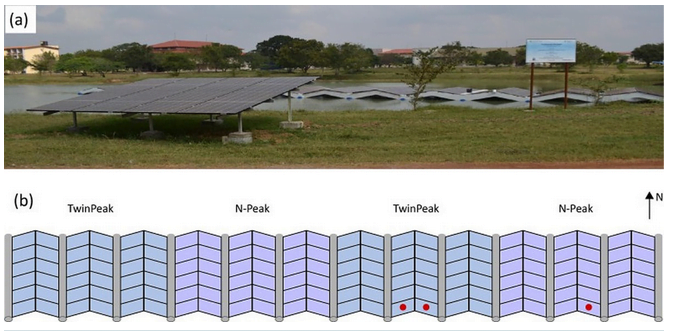Norwegian scientists have tested a new floating photovoltaic system in a reservoir in Sri Lanka. This photovoltaic system consists of composite beams that support the photovoltaic modules and high-density polyethylene pipes that provide buoyancy.
Scientists at the Norwegian Institute of Energy Technology have recently tested a new floating photovoltaic system designed and developed by Norwegian startup Current Solar on a stretch of water in Kilinochchi, Sri Lanka.

The photovoltaic system has an installed capacity of 44kW, uses composite beams to support the photovoltaic array, and uses high-density polyethylene pipes to provide buoyancy for the photovoltaic system.
“The composite beams were aligned from east to west and inclined at 15 degrees, and the photovoltaic array was installed in a longitudinal fashion to maximize the use of standard length HDPE tubes,” said the researchers.
They used two different types of PV modules supplied by Norway’s REC Group – REC Solar N-Peak 315 W and REC Solar TwinPeak 295 W.
The researchers said: “The floating photovoltaic system consists of eight strings. Each string contains 18 modules, and each module type has two strings facing west and two strings facing east. Strings using the same type of components with the same orientation are all connected in parallel to a separate maximum power point tracker (MPPT) on the same inverter.”
The floating photovoltaic system uses SMA’s 50kW inverter with a total of 6 maximum power point trackers (MPPT). The research team said the floating photovoltaic system has a small footprint and a relatively open structure because the photovoltaic modules are close to the water surface.
The team compared the performance of the floating PV system to a reference 2.5kW PV system installed on the shore over a period of one year. The reference PV system consists of 8 REC Solar N-Peak 315 W PV modules tilted 8 degrees to the south.
The scientists found that the floating photovoltaic system did not experience any performance issues during operation. However, the reservoir where this was installed has been running dry for some time.
They said, “Compared to the reference ground-mounted PV system, the relative power generation difference of the floating PV system was 0.6% during the stable performance period, which is within the allowable error of the installed capacity and is not considered performance-related. Substantial differences. The results show that the overall performance of the system is the same as other floating PV systems located in similar climatic regions.”
The researchers present their findings in an article, “Performance and Amphibious Operational Potential of Novel Floating Photovoltaic Technology,” published recently in the journal Solar Energy.
“In order to assess the degradation and reliability of floating PV systems, three years of operational data are required, and we will submit a report at a later research stage,” they noted in the article.


